Novorossiysk boron. The culprit of the death of the squadron of Admiral Yuryev
At night, Bora showed all its strength. Aminov recalled:
Hurricane night of 1848
The night that fell from 12 to 13 on January 1848 of the year actually divided the ships of the squadron. Now everyone fought with the elements all alone behind the curtain of impenetrable darkness and ice fog. The flagship of the squadron frigate "Medea" already at dusk began to quickly become covered with ice. Sailors and officers, at the risk of being washed overboard into the bubbling cold sea, chipped ice throughout the night. But that was not enough. The ship was constantly spinning like a toy, even anchors, which simply pulled from the bottom, did not help. By morning, the flagship was only 100-120 meters from the coast, and the icy body plunged into the water with its nose to the very tops. Inside the ship itself, a kingdom of ice and snow ruled. If the crew had not resisted so stubbornly, and in the morning the wind did not begin to subside, the flagship would have gone to the bottom right in the bay or would have been crushed by the waves on the shore.
The Brigade “Palamed”, commanded by Lieutenant-Commander Verdeman, was much less fortunate. As the bora began in all its frightening grandeur, anchor chains burst on the ship. Overboard gave additional anchors, but they just dragged along the bottom. After that, one of the sides struck a monstrous force in a wave, because the ship simply could not keep its nose to the wave. Three times sailors who had been in icy water threw a hole in the boards and broke them out three times, discarding and mutilating people. At the same time there was a wild glaciation of the ship. Blocks of ice, regularly bathed in huge waves, simply did not have time to break off.
Finally, the brig began to roll overboard. The cracked mainmast collapsed. The hold was almost completely flooded. The captain realized that it was impossible to save the ship in such conditions, so Verdeman decided to cut the ropes in order to throw the brig ashore. Despite the almost complete uncontrollability of the Palameda, by morning the ship was stranded. Five volunteers volunteered to take the lifeguard to shore, but huge waves broke the boat. All five daredevils died. Only in the afternoon, thanks to help from the shore, was it possible to transport the crew to land. "Palamed" after this furious waves and wild bora just grind. Brig is dead.
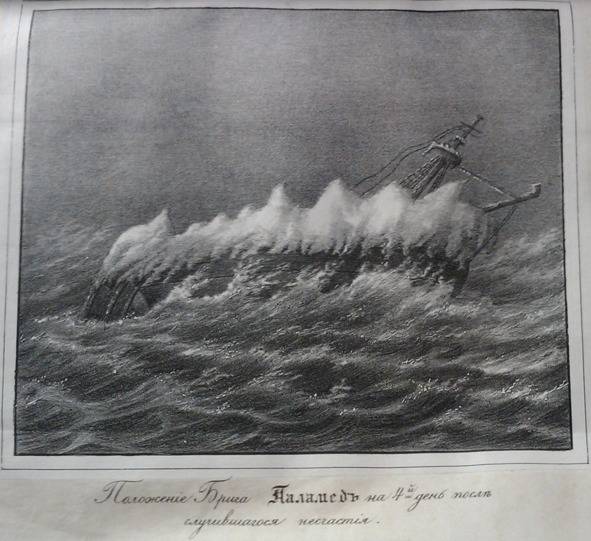
Corvette "Pilad" was waiting for a real odyssey. All night, the ship of the captain of the 2 rank, Nikolai Yurkovsky, the future hero of the Sevastopol Defense, fought with ice growths and huge waves. Despite both anchors given, the corvette constantly blew ashore. At the end of the 8 hour of the morning of January 13, the ship actually lost the helm. At the same time, the number of injured and frostbite increased.
The ship survived the next day thanks to a lull. But by the night of 13, at about midnight, the corvette had received a hole. Two pumps barely managed to cope with the flow of water. But this "Pilad" withstood. The next morning, Captain Yurkovsky decided to stretch the rail to the shore and evacuate part of the crew, the wounded and sick in the first place. The local population and the fort garrison, powerlessly observing the tragedy of the squadron in the raid, of course, helped the sailors in every possible way. However, in the afternoon the wind intensified, and the rail broke, so the evacuation had to be stopped.
On the night of the 14 on the 15 of January, more and more water began to arrive in the Pilada hold. At dawn, the boron subsided a little, and again managed to establish communication with the shore. The whole team, given the poverty of the situation, the captain ordered to be evacuated. Yurkovsky, as expected, left the corvette last. Over forty sailors and officers were immediately taken to a Novorossiysk hospital with frostbite of varying severity. The corvette itself was thrown aground, but, despite severe damage, the ship was saved and restored.
In those fateful days, the bold schooner "Courageous" under the command of Captain Kolchin lived up to her proud name. At night and day, the crew chopped ice growths for almost two days. But it seemed like it was useless. Finally, Captain Kolchin ordered to chop off the bowsprit and all rigging. They also tried to throw cannons overboard in order to facilitate the ship, slowly sinking into the water, but by this time the guns had completely frozen and looked like solid blocks of ice. After two days of this stubborn battle, seeing that Bora did not think to calm down, the captain stranded the schooner and began the evacuation of the crew.
In his report on those events, Kolchin highlighted this battle with the elements:
The steamer Fighter, which entered Novorossiysk to replenish its coal supply, was under the command of Captain Rykachev. During the bora, he gave all his anchors, but they could not keep the ship in the raid. The “fighter” drifted inexorably toward the shore. Already in the morning of January 13, the left side of the ship was pounding on the ground with all its might, and it began to roll on its side. However, the captain managed to tighten the ship stranded. So that the waves would not break the ship’s hull and break it on the coastal cliffs, before the evacuation, the captain ordered to fill the hold with sea water.
Transport “Gostogay” also gave all its anchors, but this did not help him. The ship of Lieutenant Shchegolev began to be carried ashore after midnight on the 13 of January. At 4-5 in the morning, “Gostogai” ran aground, losing the steering wheel. The element began to pound the hull of the ship on the ground.
Finally, water poured into the hold. The entire ship, both inside and outside, was covered with a thick layer of ice crust. It was not possible to pump out water, but it held the ship tightly aground. Shchegolev, in order to save the team from cold death, ordered everyone to come together on a residential deck and warm up together. At dawn, it turned out that the coast was a few meters away, so a heavy evacuation began, because by this time most of the team even moved with difficulty. Later, "Gostogay" still managed to remove from the shore and put on for repair.
Schooner "Swallow" under the command of Captain Lieutenant Danilevsky took the battle with the elements in the open sea near Novorossiysk. Even being far from the coast, the “Swallow” was completely covered with ice crust and slowly began to sink under its weight. The schooner team managed to survive only thanks to the sudden warming and the time-changing wind, which began to demolish the ship in the direction of Novorossiysk. At the port, half of the team was sent to the hospital with frostbite on body parts.
But the most tragic fate awaited the “Jet” tender, whose team was 52 people, including captain-lieutenant Pavel Leonov, an experienced commander who had commanded the ship for the third year. Bora was especially merciful to this ship. The speed of its icing was simply unbelievable. By the morning of 13 on January, only the top of the mast was visible above the water. Sailors perished one and all.
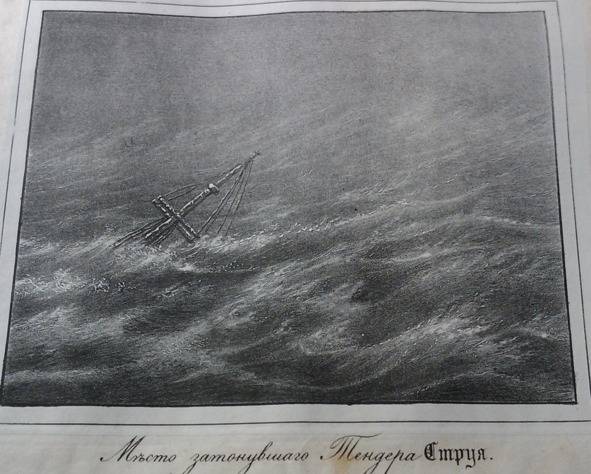
Later it turned out what a desperate fight broke out on the "Jet". The team quickly removed the bowsprit (the mast beam protruding forward from the bow of the sailing vessel) in order to reduce the icing area and reduce the windage. All guns were pulled into the stern, so that they would not be shackled by ice hummocks and optimize stability. All anchors and peppers (auxiliary small anchor) were given away. When it became clear that it was impossible to resist, the team made a desperate attempt to land on the beach. The riveted, apparently icy chains of the bridleel (dead anchor) speak in favor of this. True, according to another version, the chains burst themselves.
In August 1848, an operation was carried out to raise the “Jet” tender, which was personally led by the legendary Admiral Pavel Stepanovich Nakhimov. Inspection and helped to find out the last hours of the life of the ship and crew. On the nose, which was the first to freeze, were found pieces of broken boarding guns and broken hilt axes that chopped ice. Later, a report was published on the work relating to the bodies of dead sailors:
Consequences of the tragedy
In fact, in addition to the flagship frigate Medea and the icy schooner Swallow, all the other ships of the squadron were disabled, and the Brigade Palamed was completely destroyed. The consequences of the Novorossiysk bora were equal to losses in a naval battle. The squadron ceased to exist, so urgently a new squadron was sent to the Black Sea under the command of Rear Admiral Yegor Ivanovich Koltovsky. By the way, it was he and his sailors who took an active part in removing from the shallows and raising the wrecked ships of the squadron of Admiral Yuryev.
After the tragedy, the Pilad corvette was stranded, caulked holes and towed to Sevastopol for a thorough repair. Later, the ship will take part in the Crimean War and will be flooded in the roads. Schooner "Courageous" will also be restored, she will also fight in the Crimea and go to the bottom after another bombardment. The steamer “Fighter” will be taken aground, and in the Crimean War the crew itself will destroy it so that it does not go to the enemy.
Transport "Gostogay" will be successfully repaired. The ship will meet its death in the 1855 year. The tender “Jet”, despite the fact that it has become a mass grave for more than fifty Russian sailors, will be restored in Sevastopol, where it will be delivered by the ship “Bessarabia” at the end of August 1848. The tender will find its end near Kerch, again in the 1855 year.
Already at a very advanced age, Pavel Nikolayevich Yuriev will leave the naval service with the rank of vice admiral. There were no accusations against him. In fact, despite the losses incurred by the fleet, both material and human, the admiral’s decision to stay and wait out the pine forest in the bay was the only right one. On the high seas, casualties would be far more fatal, not counting the ships themselves. Of course, the admiral could have ordered to throw the squadron ashore as early as the afternoon of January 12. But, firstly, bora at that moment was a little-studied phenomenon, and there was no mention of any meteorological reports. And secondly, in a few days the elements of the waves and the monstrous wind would surely crush all the ships on the shore, like cheese on a grater. In addition, in the conditions of the 12 number, there would be big problems with the evacuation of crews, and there was no question of trying to anchor the ships or pull them ashore.
Bora still causes enormous damage to Novorossiysk annually. The last time the wind diverged about nine years ago, when he took off the roofs of almost all the houses on Lenin Avenue, turned the steel door into the author’s porch with the letter “C”, left the city without light for three days, blocked the port, blocked most of the roads with fallen trees, advertising boards and trade pavilions. The embankment was covered with ice hummocks. For more than a day the city lived without bread.
Such is she, the great and terrible Novorossiysk bora.
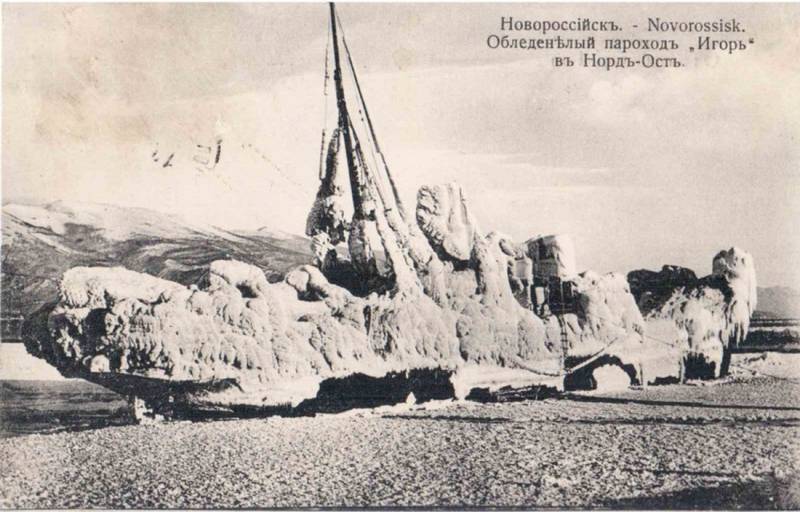
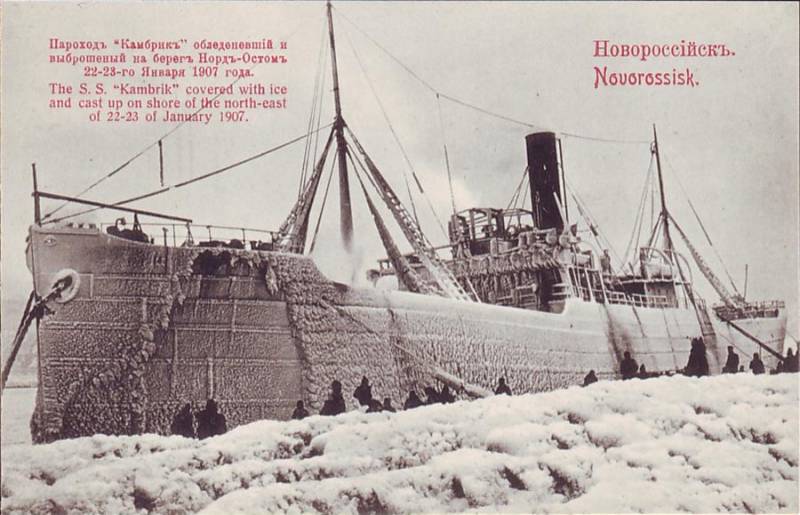
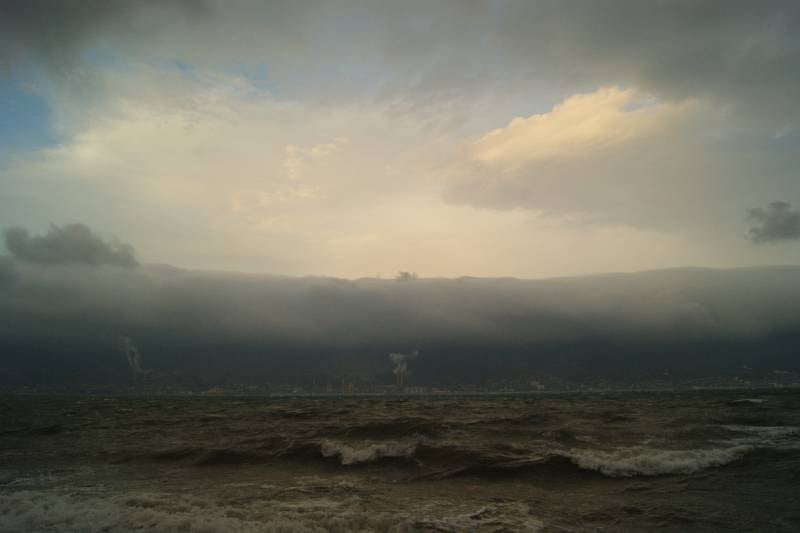
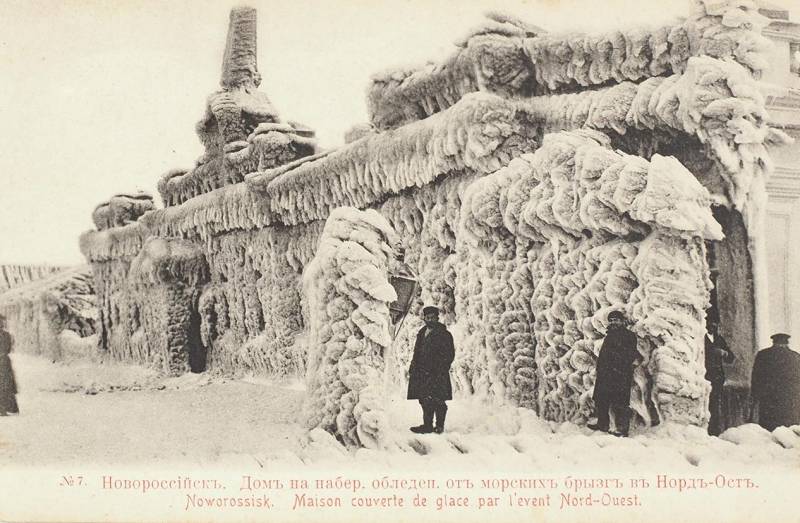
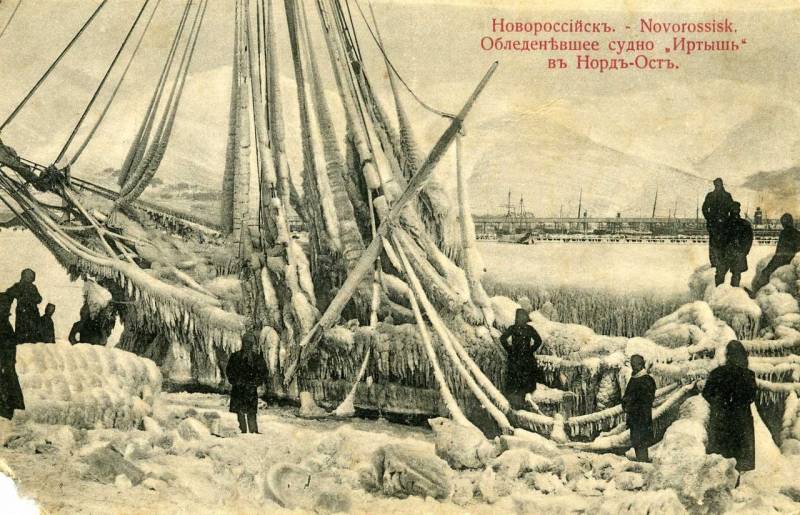
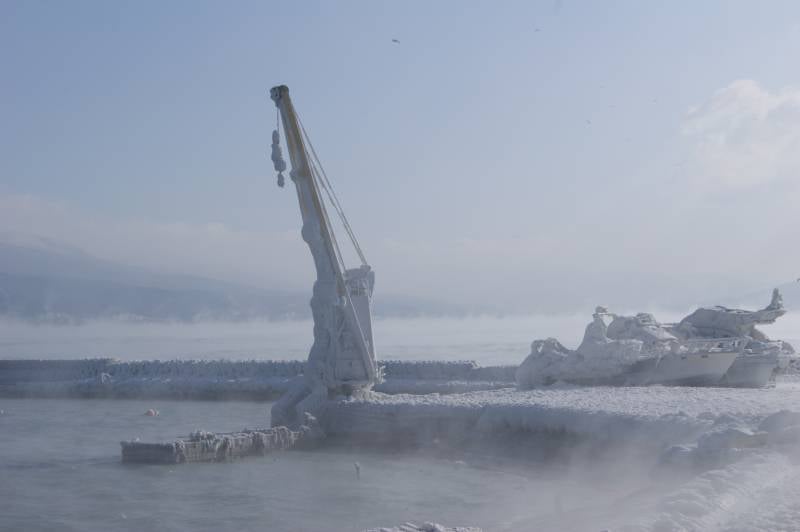
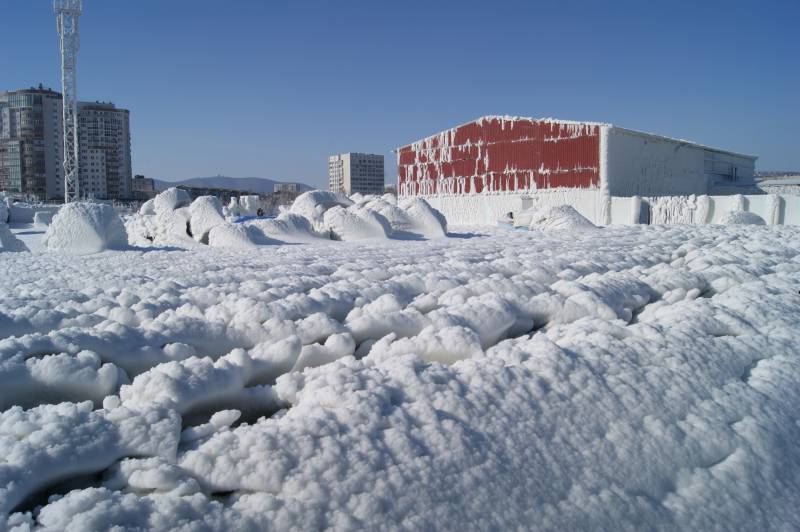
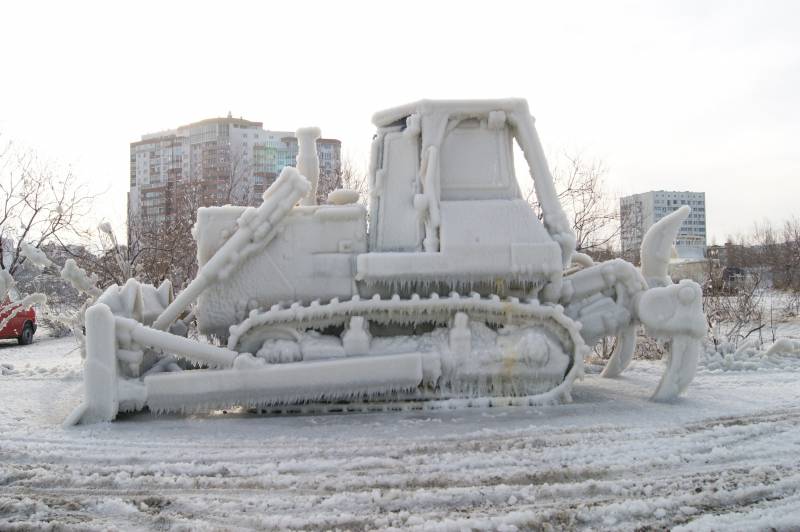
Information